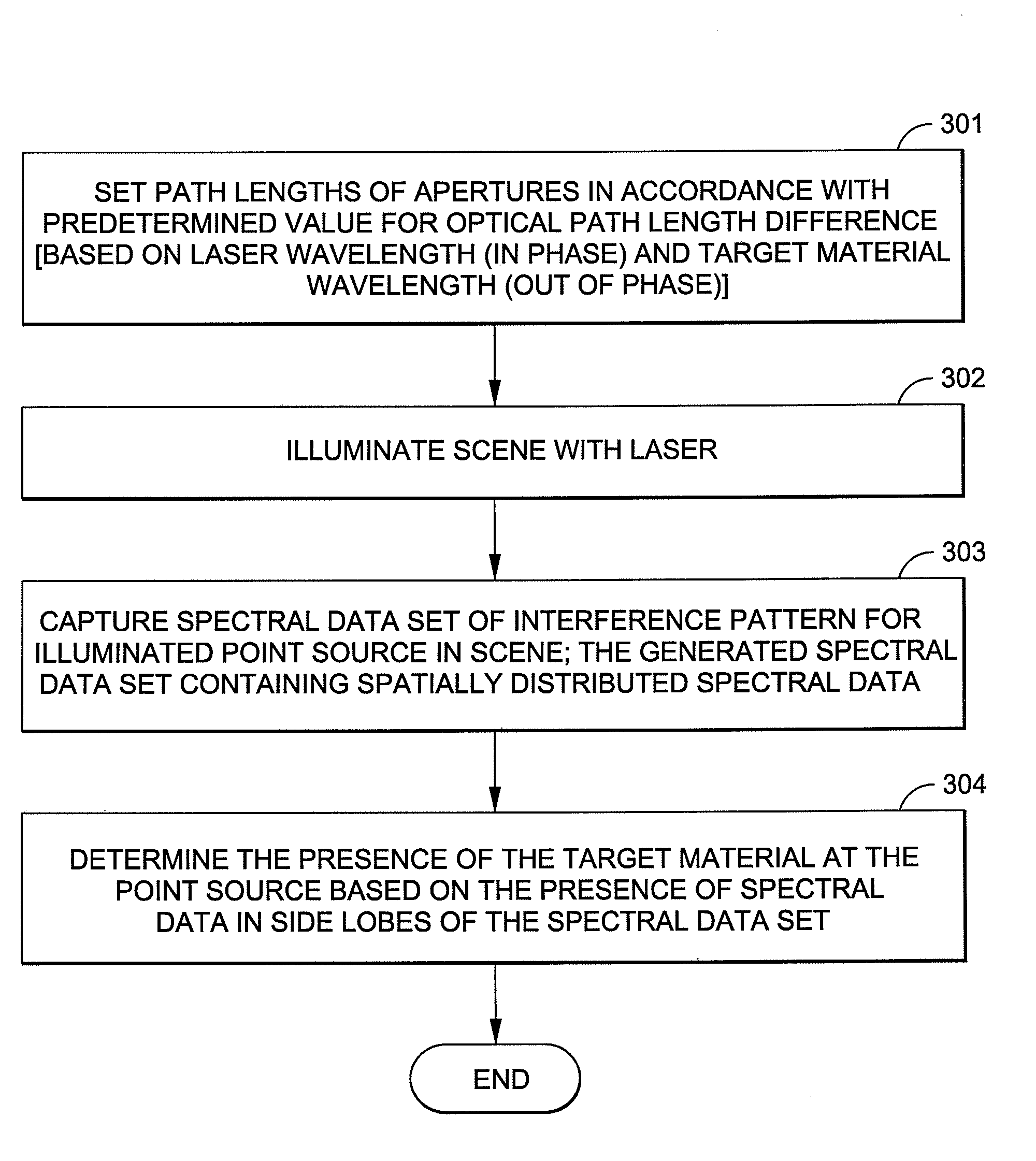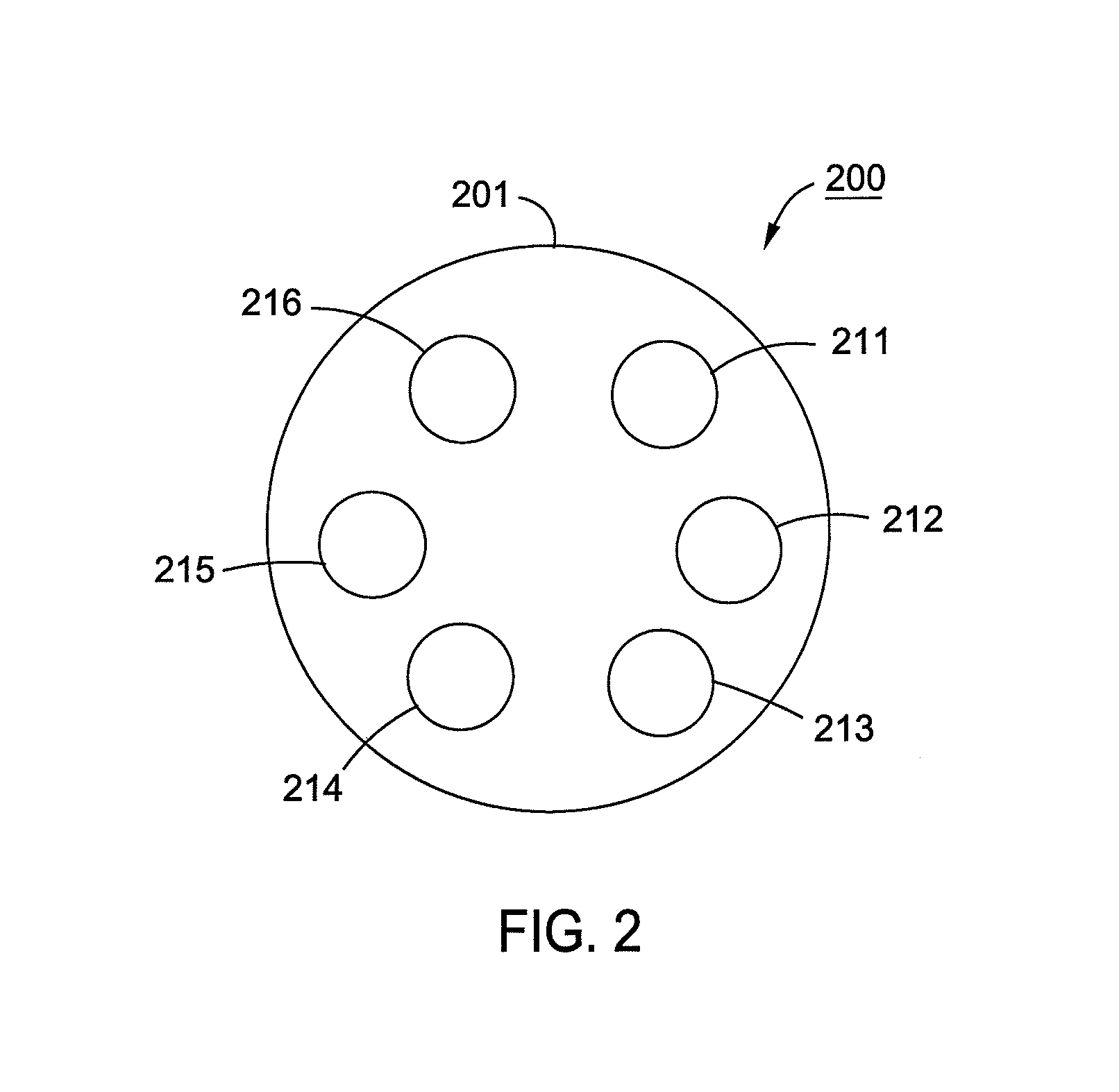Generation of spatially distributed spectral data using a multi-aperture system
a multi-aperture optical system and spatially distributed technology, applied in the field of spectroscopy, can solve the problems of prohibitive time required to obtain these sets of data, traditional imaging spectrometers typically require long integration times, etc., and achieve the effect of quickly and efficiently generating spatially distributed spectral data
- Summary
- Abstract
- Description
- Claims
- Application Information
AI Technical Summary
Benefits of technology
Problems solved by technology
Method used
Image
Examples
Embodiment Construction
[0026]As mentioned above, the present invention utilizes a multi-aperture optical imaging system by adjusting the optical path lengths of the apertures to known values according to a desired wavelength or waveband for collection, collecting an image of a scene, and extracting rudimentary spectral information from the one collected image regarding the desired wavelength or waveband.
[0027]FIG. 1 is a basic diagram for illustrating a basic multi-aperture interferometer system with which the present invention may be implemented. As seen in FIG. 1, interferometer system 100 is shown and includes apertures 101 and 102 for collecting wavefront 150 from a distant scene (not shown). The collected wavefront from each of apertures 101 and 102 is directed to combiner optics 130 through the use of mirrors. At least one of the apertures, in this case aperture 101, includes an independent path length adjustment device 121 for adjusting the optical path length of the incident radiation gathered by ...
PUM
 Login to View More
Login to View More Abstract
Description
Claims
Application Information
 Login to View More
Login to View More - R&D
- Intellectual Property
- Life Sciences
- Materials
- Tech Scout
- Unparalleled Data Quality
- Higher Quality Content
- 60% Fewer Hallucinations
Browse by: Latest US Patents, China's latest patents, Technical Efficacy Thesaurus, Application Domain, Technology Topic, Popular Technical Reports.
© 2025 PatSnap. All rights reserved.Legal|Privacy policy|Modern Slavery Act Transparency Statement|Sitemap|About US| Contact US: help@patsnap.com



